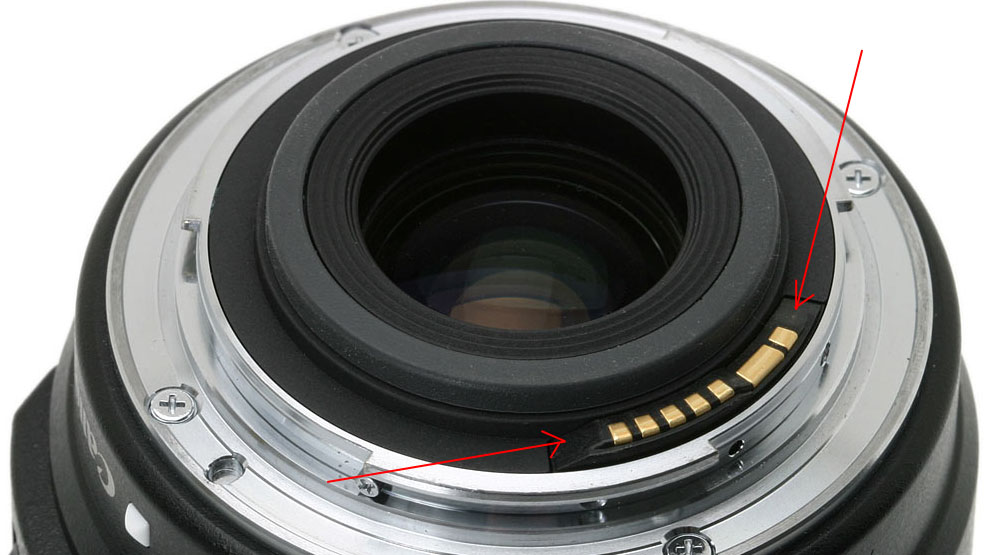Vediamo i motivi di questa famosa sigla !
- ITA -
In molti, spesso, si saranno chiesti: perchè Canon ha chiamato questa tipologia di macchine fotografiche in questo modo? C'è un motivo reale?
La risposta è si! Il motivo c'è ed è squisitamente di natura tecnica.
EOS -> Electro Optical System
Questa tipologia di reflex fu introdotta nel 1987 nelle reflex analogiche e poi naturalmente trasferito in quelle digitali con sensore APS-C e APS-H.
Ciò che fa veramente la differenza, rispetto a i modelli precedenti utilizzati da Canon, è l'innesto a baionetta. Esso fu introdotto per permettere all'utente finale, rispetto al precedente innesto FD, di non avere alcun contatto con le parti meccaniche della reflex utilizzata se non per gli innesti di collegamento. Quest'ultimi sono essenzialmente il ponte che permette di regolare elettronicamente aperture e tempi di scatto permettendo una messa a fuoco di maggior precisione.

La tecnologia con il tempo ha permesso poi di sviluppare obiettivi sempre più luminosi, nitidi e precisi, eludendo talvolta l'errore umano e reinterpretando in un modo del tutto automatico.
Molti pensano che sia un passo in dietro per quanto riguarda il vero concetto di fotografia, io penso che essendo il fotografo un'artista a tutti gli effetti, possa usare e sperimentare tutti gli strumenti che vuole ma naturalmente è ciò che riprende che lo rende unico e speciale. Sta ad ognuno di noi poi considerare queste tecnologie come un vantaggio oppure qualcosa da non tenere conto.
Essenzialmente ciò che contraddistingue un obiettivo Canon da un'altro sono le seguenti sigle:
- EF: Riguardano tutti gli obiettivi utilizzabili sia con sensori APS-C e sia Full Frame, cioè i sensori APS.
- EF-S: Riguardano tutti gli obiettivi utilizzabili solo con sensori APS-C e dunque con un fattore di moltiplicazione o "crop factor" di 1,6.
- IS: Image stabilizer, riguarda gli obiettivi che posseggono la possibilità di eseguire una stabilizzazione dell'immagine in prima dello scatto.
- L: Luxury, cioè tutte quelle ottiche esclusivamente dedicate e riprogettate ad uso professionale.
- DO: Diffractive Optics, tutte quelle ottiche che posseggono tecnologia di riduzione cromatica.
- TS: Tilt Shift, tutti coloro i quali sono decentrabili.
- L'indicazione di un numero romano, indica essenzialmente la versione di un obiettivo I, II, III ecc.
- ENG -
Many often have wondered: why Canon has called this type of cameras in this way? Is there a real reason?
The answer is yes! The reason is there and is purely technical in nature.
EOS -> Electro Optical System
This type of SLR was introduced in 1987 in the film cameras and then of course moved to digital ones with APS-C and APS-H.
What really makes a difference compared to previous models used by Canon, is the bayonet fitting. It was introduced to allow the end user compared to the previous graft FD, not to have any contact with the mechanical parts of the reflex if not used for grafts connection. The latter are essentially a bridge that allows you to electronically adjust apertures and shutter speeds allowing focus more precisely.
The technology with the time allowed then to develop goals more bright, sharp, precise, avoiding human error and sometimes reinterpreting in a fully automatic mode.
Many thought it was a step backwards with respect to the true concept of photography, I think that being an artist photographer in effect, to use and experiment with all the tools you want but of course is what makes it unique resumes and special. It is up to each of us then consider these technologies as a benefit or something not to be taken into account.
Essentially what distinguishes a Canon lens from another are the following abbreviations:
- EF: They concern all lenses can be used with both APS-C and full frame is, that the APS.
- EF-S: They concern all objectives can only be used with APS-C and then with a multiplier or "crop factor" of 1.6.
- IS: Image stabilizer, concerns the goals that possess the ability to perform a stabilization of the image before shooting.
- L: Luxury, namely, all lenses are exclusively dedicated and re-designed for professional use.
- DO: Diffractive Optics, all those who possess optical technology to reduce chromatic aberration.
- TS: Tilt Shift, all those who are shiftable.
- The indication of a Roman numeral, indicates essentially the version of Objective I, II, III and so on.
©Copyright by Marco Pollini 2018











